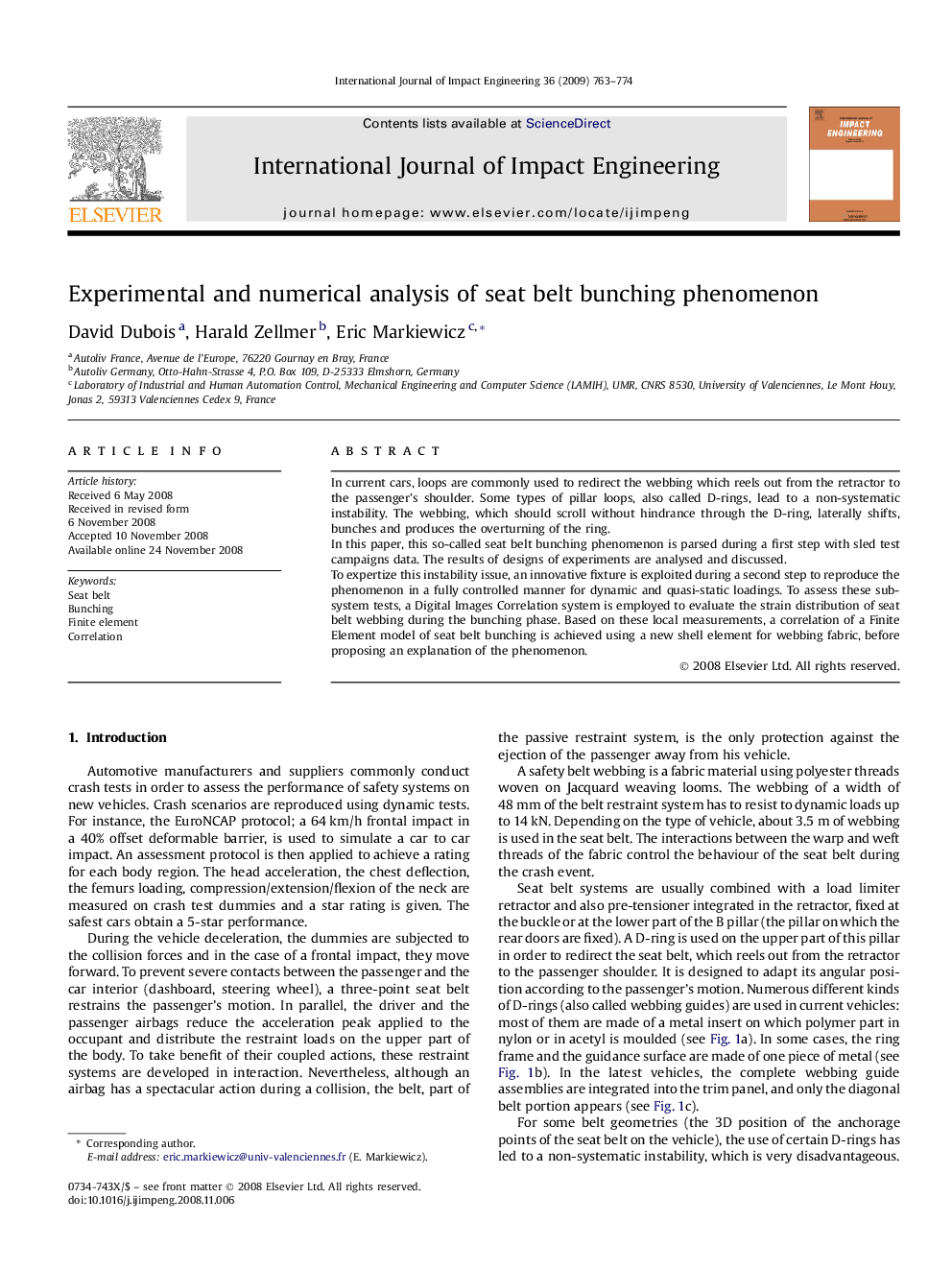| Article ID | Journal | Published Year | Pages | File Type |
|---|---|---|---|---|
| 783383 | International Journal of Impact Engineering | 2009 | 12 Pages |
In current cars, loops are commonly used to redirect the webbing which reels out from the retractor to the passenger's shoulder. Some types of pillar loops, also called D-rings, lead to a non-systematic instability. The webbing, which should scroll without hindrance through the D-ring, laterally shifts, bunches and produces the overturning of the ring.In this paper, this so-called seat belt bunching phenomenon is parsed during a first step with sled test campaigns data. The results of designs of experiments are analysed and discussed.To expertize this instability issue, an innovative fixture is exploited during a second step to reproduce the phenomenon in a fully controlled manner for dynamic and quasi-static loadings. To assess these sub-system tests, a Digital Images Correlation system is employed to evaluate the strain distribution of seat belt webbing during the bunching phase. Based on these local measurements, a correlation of a Finite Element model of seat belt bunching is achieved using a new shell element for webbing fabric, before proposing an explanation of the phenomenon.
